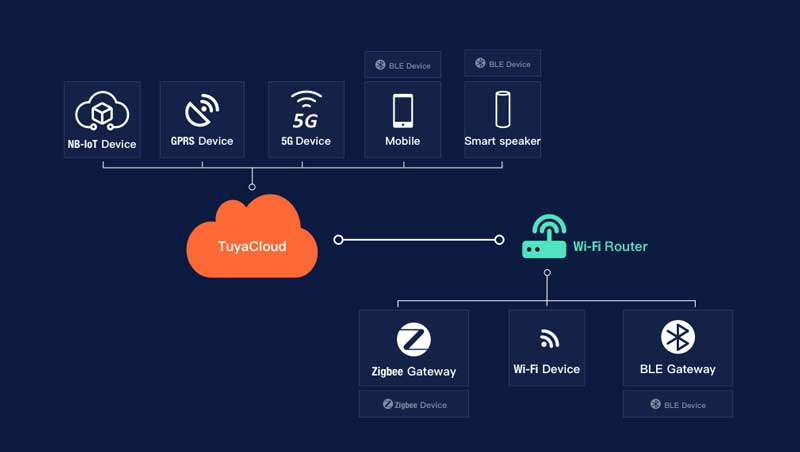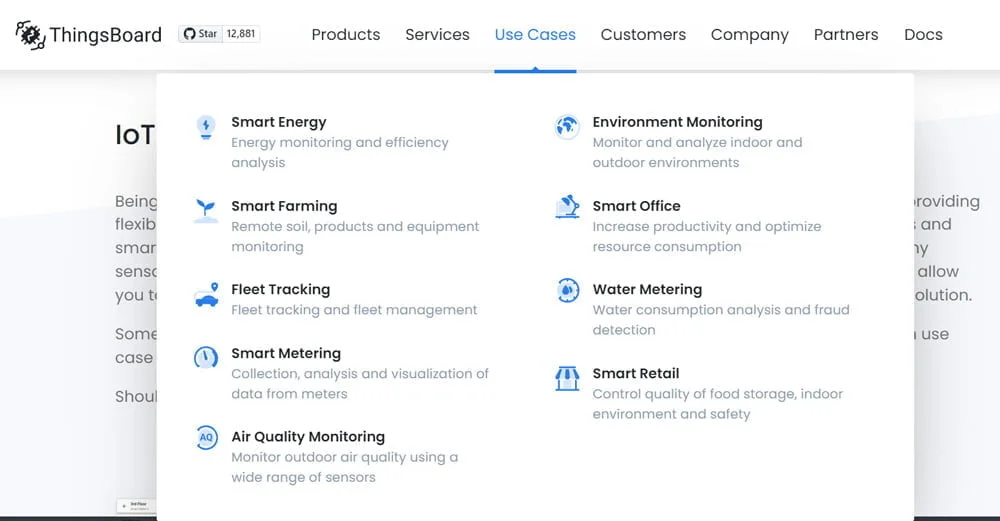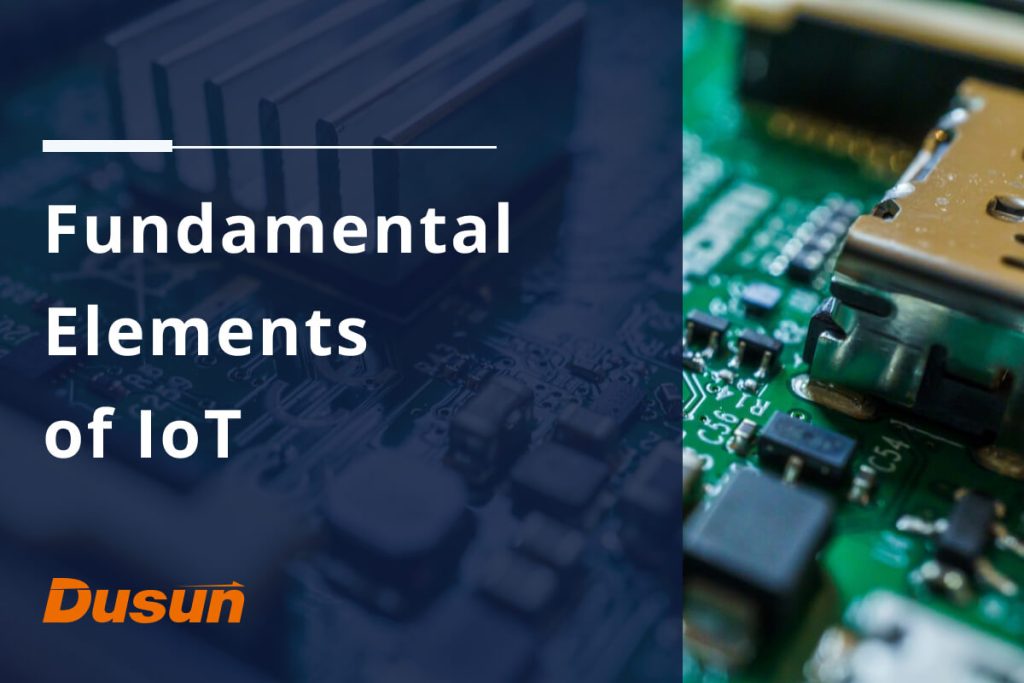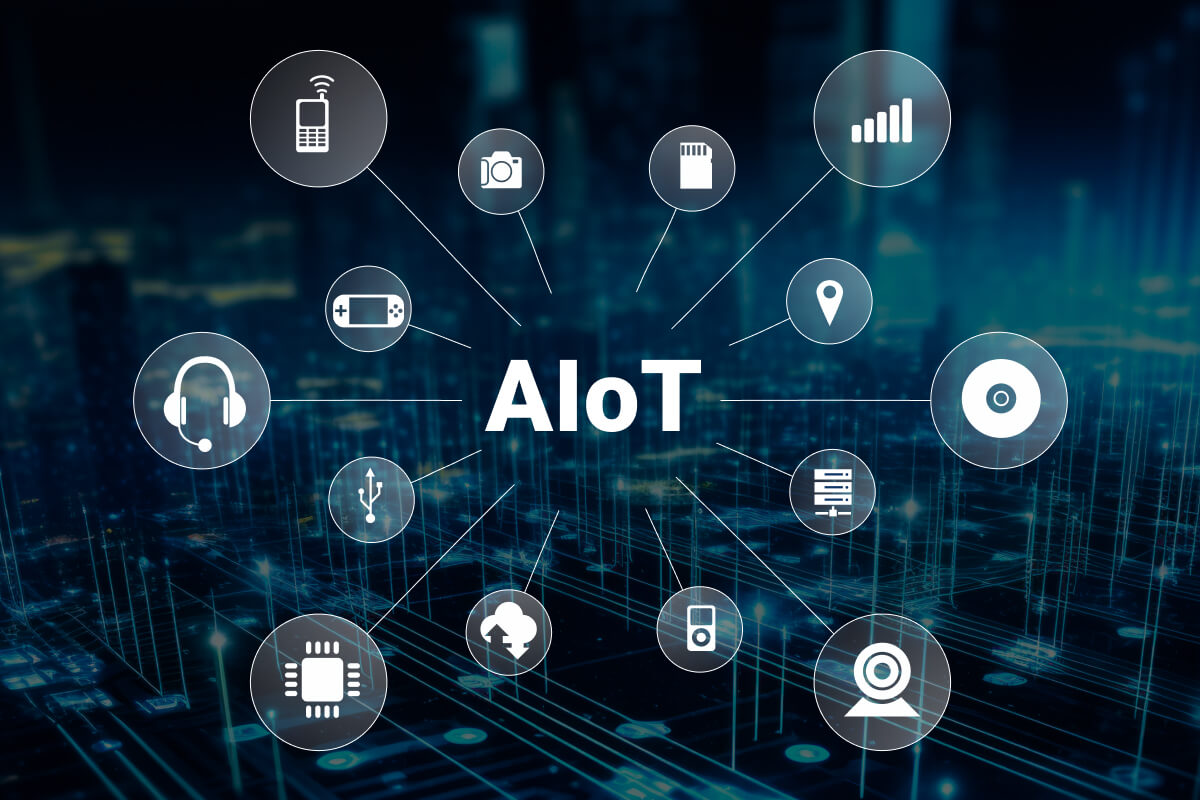There is no doubt that IoT can bring enormous benefits for enterprises. It connects various devices, sensors, machines to the Internet, allowing organizations to collect and analyze data in real-time, automate working procedure, in order to improve efficiency. The operation of IoT is fundamentally based on IoT hardware, network, computing capability, software tools, and technical stacks. To better build up a IoT project, we recommend you to know the basic components (end devices, gateway, PaaS, SaaS, device-to-cloud message queuing) at first. What are their relationship?
End Devices
Terminal gadgets that aiming to communicate with the cloud, including smart sensor, smart wearables, smart actuators, and so on. They gathers raw data from the environment, process it, and transmit to the middleware gateway for further uploading the data to the cloud for data analyzing and remote control.
The types of sensors are very wide. We can make categories according to its using scenarios. For example, sensors used in home and building automation may include light sensors, leak (water and gas) sensors, door sensors, smoke detectors, RIP sensors, temperature and humidity sensors, etc. You can view more smart sensors for IoT here.
IoT Gateways
IoT gateway plays a very important role in the entire IoT framework. It is mainly used for data exchange and protocol conversion among different devices and systems. An Internet of Things gateway is able to convert different protocols, data formats, and communication methods, so that end devices are capable of communicating with the cloud. Take temperature monitoring in electronic products manufacturing as an example: to keep manufacturing equipment operate normally and meet PCBA assembly requirement, it is necessary to reach the required floor shop standard to start the production. Otherwire, it will affect the final quality of finished electronic products, and result in the loss of invested time and money. This is particularly crucial for SMT surface mounted technoloy). You can learn more about details of how IoT helps temperature monitoring here.
IoT gateway can be divided according to its CPUs, operating system, application, protocols, and so on. You may look for more IoT gateway development info here.
Communication Protocols
Protocols are of great significance to data transmission and exchange in IoT. The end devices and gateways usually use these protocols: BLE, Zigbee, Z-Wave, LoRaWAN, ect., while after the gateway parsing the data, it send the info the PaaS in another protocols like wireless WiFi/Cellular, or wired Ethernet. Why different protocols for IoT?
End Device Cost is Relatively Low
Organizations uses a large amount of IoT sensors to collect data, they are everywhere and need to be low-cost. This determines that most end devices come with small memory and cheap prices, processing info through 01 sequences repeatedly, unable to store a variety of underlying languages like PaaS servers.
End Devices are Low-powered
For end devices, low power consumption is the key. Some sensors are deployed in remote areas, and they are in sleep mode always, only wake up when necessary, like sending alarm info when the temperature is over the setting. Due to such infrequent radio transmission design, end devices are able to save energy and work for a long time. As a result, they prefer low-powered protocols as well, like BLE (Bluetooth Low Energy), Zigbee, LoRaWAN, etc.
Scalability
As we mentioned above, the protocol languages used between end devices and gateways are usually BLE, Zigbee, LoRaWAN, ETC. This allows for high scalability and flexibility because end devices can choose different protocols according to its deployment strategies, power consumption requirement, security, or cost.
Enhanced Security
The information transmitted between end devices and gateways, or between gateways to PaaS might be of high privacy. Therefore, additional data verification is required for ensure data security. Obviously, using different protocols is a good way to build security protection mechanism.
Easier Maintenance
Using different communication protocols will make downlink system more easy to be managed and maintained. Developers can utilize different protocol frameworks, which have been tested and verified, to write relevant applications. This improves the ease of development and maintenance.
You may also interested in
Wireless protocols for IoT, how to choose the proper one?
what is Bluetooth, and Bluetooth version comparison?
What is Zigbee, and its topologies and variants?
What is Z-Wave, and how does it work?
What is LoRa and how to build a LoRaWAN network?
Cellular connectivity for IoT, how many choice you can have?
PaaS (Platform-as-a-service)
PaaS is the composable development service based on the cloud, usually provided by big cloud service providers. PaaS contains a complete technical stack ecosystem, with built-in software components for both hardware and software such as runtime libraries, tools, applications, email and HTTP servers. PaaS enables developers to focus more of their time on creating the application, rather than worrying about infrastructure, storage, software upgrades, or operating systems. It allows for more flexibility and customization.
A typical PaaS example is Tuya Smart Home PaaS. Customers can choose their preferred way to develop an OEM APP or utilize their IoT APP SDK to complete self-development. Whatever way you choose, there is an API required for data and device management.

View more Tuya PaaS info here
Turnkey Tuya smart home product solution, including smart home hub, sensors, security cameras, and valve controllers can be found here.
You may also interested in Top IoT cloud providers list.
SaaS (Software-as-a-Service)
SaaS is also the service based on the cloud. If you want off-the-shelf convenience and ease of use, SaaS is obviously the best option. You do not have to spend time worrying about where the software is hosted, and the money for buying server and software is saved as well. What you need is just the Internet, console dashboard or API.
SaaS can be offered by numerous software vendors, large and small. Enterprises can use it for centralized data management, using AI power to improve efficiency, or scale up IoT deployment in new geographical locations without worrying infrastructure. In addition, SaaS provider will offer software maintenance and security patches.
A Popular SaaS provider is ThingsBoard. It offers data collection and visualization, device management, and rest API for users. You can explore what is ThingsBoard detailed info here. Or directly quote ThingsBoard gateway prices here.

How Does IoT Gateway Send Messages to the Cloud?
Sensors gather raw data from environment and transmit to the gateway, the gateway MCU processes and package info, and then send to the cloud via WiFi. But in application layer, how does the gateway communicate with the cloud? You may think of HTTP (Hypertext Transfer Protocol) widely used on the Web. But it’s maybe overburdening and power-consuming for IoT devices who emphasize on low-power consumption.
Read further: why IoT device power consumption is so important?
Considering this factor, the lightweight, machine-to-machine, and publish-subscribe MQTT (Message Queuing Telemetry Transport) is best choice for sensor-to-cloud communication. MQTT is aiming to work under low bandwidth, occupy small space, and send message via TCP/IP. MQTT has already been widely used in smart home, building automation, and industrial automation.
MQTT can be used between inter devices and device to server. A programme called BLE2MQTT enables BLE devices to connect to and communicate with a MQTT broker. Gateways also use MQTT to send data to the cloud. Take BLE-enabled smart meter as an example, the gateway aggregates and store sensor data, and publish data to the MQTT broker. When the user need to know real-time energy consumption conditions, and he subscribes from MQTT broker. In this way, this user is able to implement real-time energy monitoring via cloud-based PaaS or SaaS.
You may interested in:
How to connect an IoT gateway to an apache-Apollo broker?
Example: set IoT gateway as a MQTT client to communicate with MQTT broker
Demo: Activemq MQTT Java Example
Enhance Security through MQTT
MQTT can provides security protection & shield to prevent data getting attacked by intruders. This publish-subscribe messaging mechanism allows client authentication which accredits a two-way hand shake. If you want to enhance encrypted MQTT message/data transfer, there is a guide on how to connect gateway to MQTT broker with SSL.
Final Words
The coordinated development of the numerous IoT components is the cornerstone of IoT evolution. Data collection, data conversion, data transmission, data analysis, and data processing need to be realized in the Internet of Things system in order to support the unhindered flow of information generated by various “Things”. Therefore, the importance of IoT gateway hardware can not be ignored.
It can be installed locally and set up to execute local pre-processing before sending the gathered data from multiple sensors to the cloud platform. In the meanwhile, it serves as a layer of security in between devices and the cloud to guard against malicious attacks and illegal access.
Further read: what factors to consider and how to choose appropriate IoT gateways?
It does make sense to conceive of IoT as a system of systems when you consider the numerous technological and physical elements that go into creating an IoT ecosystem. Enterprise architects tend to build integrated solutions that comprise edge devices, applications, transport devices, communication protocols, and cloud analytics functions that make up an IoT system completely functioning. Therefore, creating an IoT system that offers real commercial value for the organization is sometimes a challenging undertaking.
















